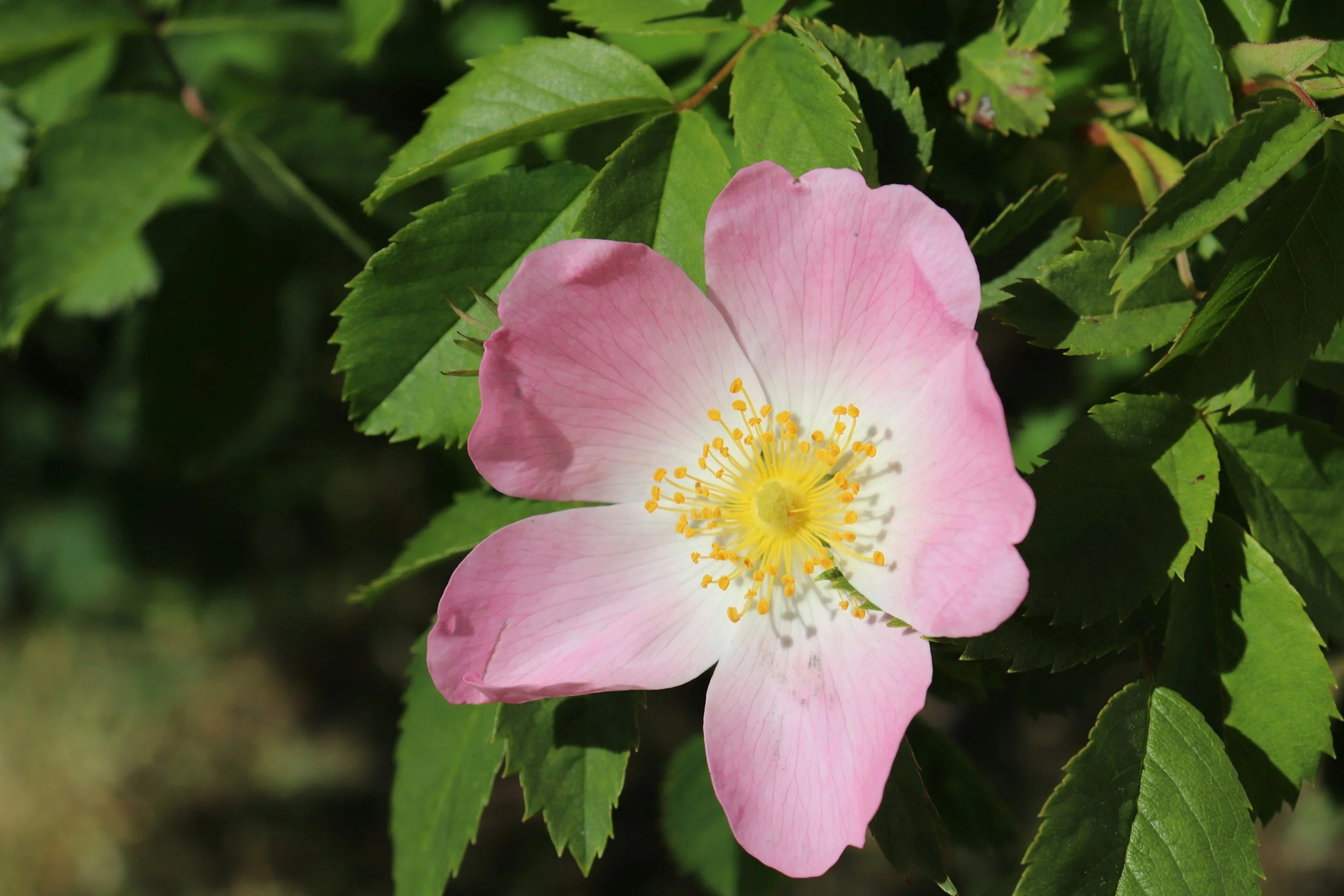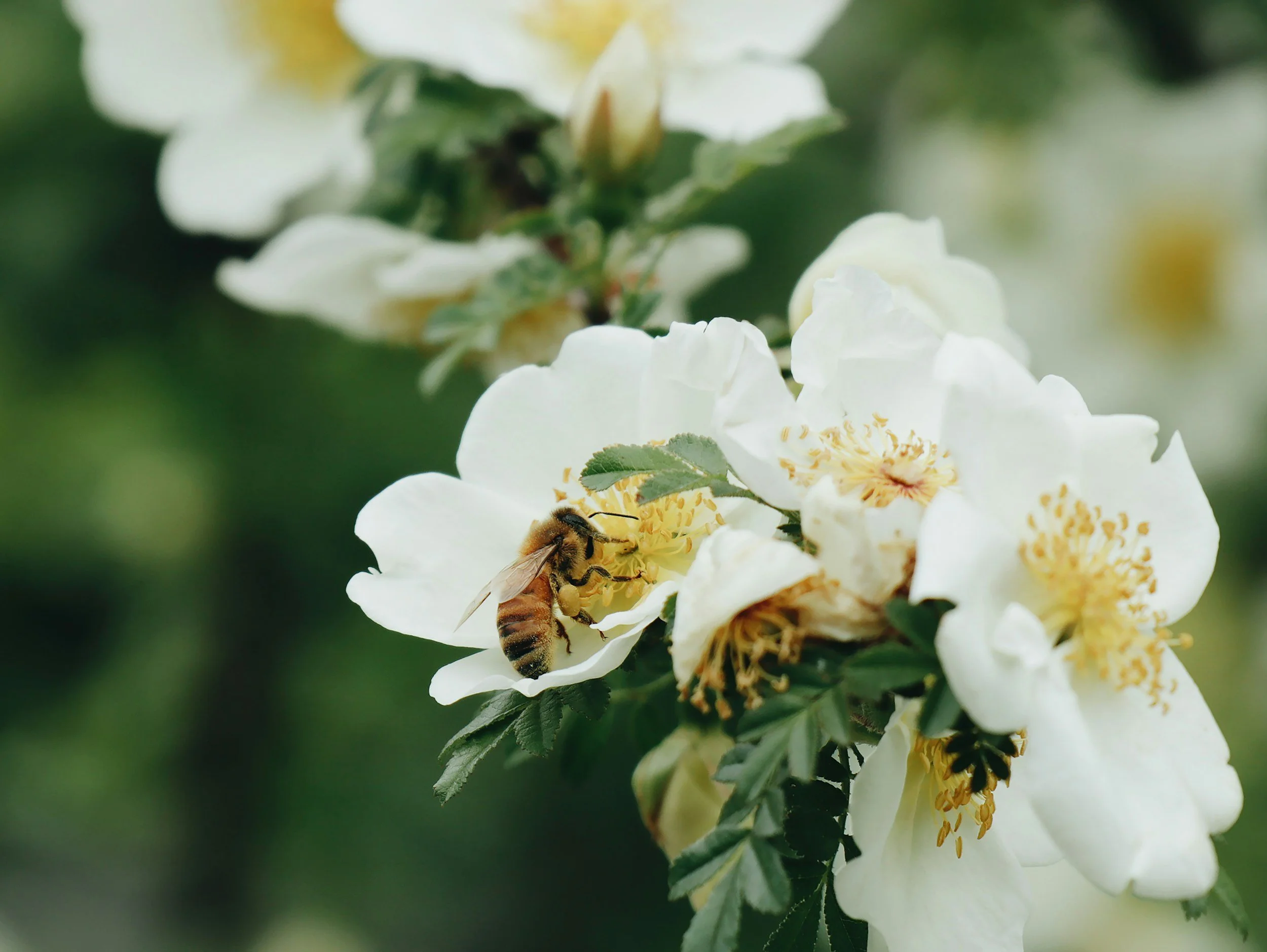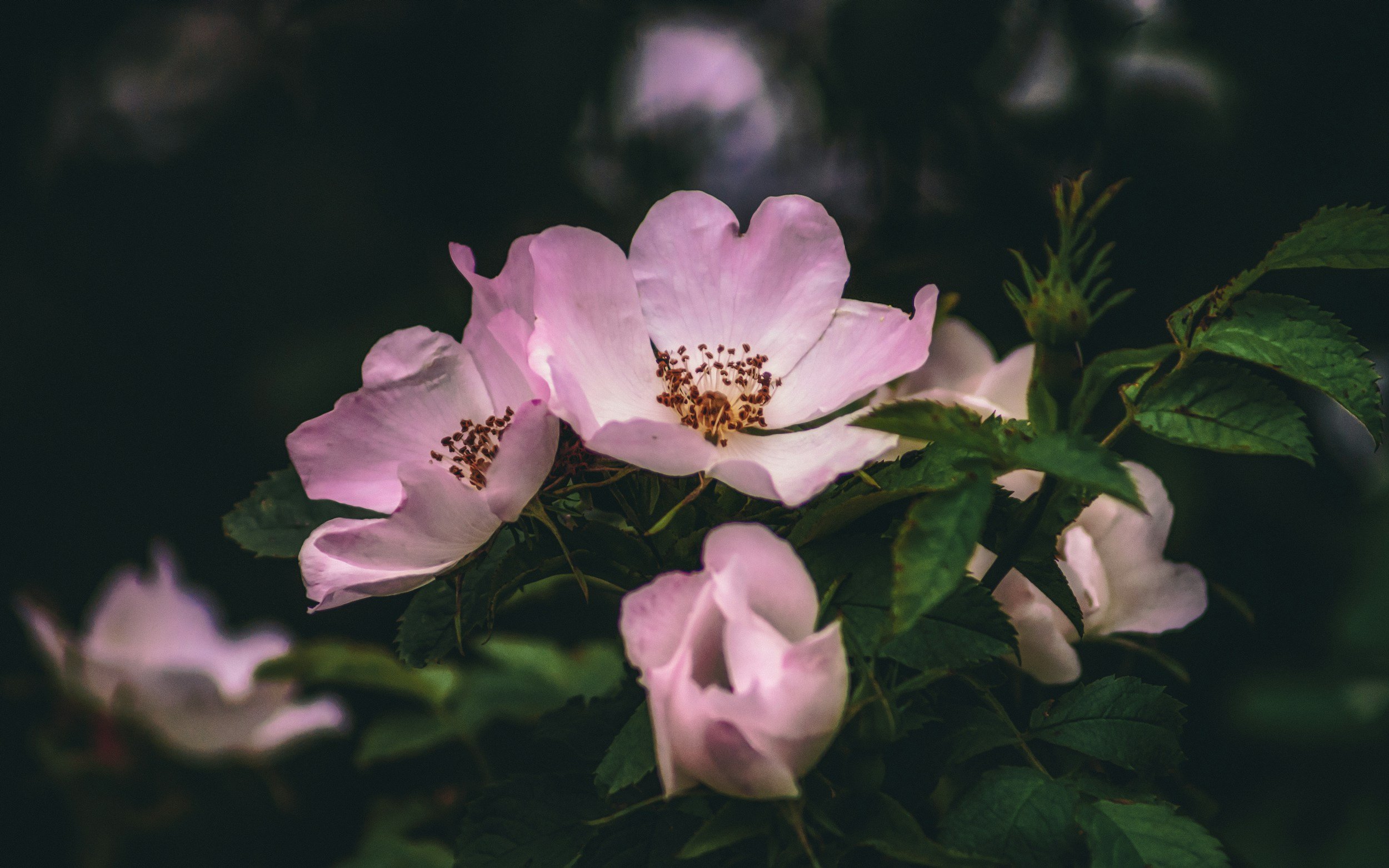
Rose
Rose
(Rosa spp)
Plant Family
Rosaceae
Significant Species / Names
Rosa damascena – Damascus rose
Rosa gallica – French or Apothecary rose
Rosa canina – Wild, common or dog rose
Parts Used
Flos (Flowers)
Fructus (Fruit)
Typical Forms of Prescription
Flos (Flowers):
Tinctures
Infusions
Essential oil (for external use)
Aromatic water
Fructus (Fruit):
Syrups
Tablets
Tinctures
Rose (Rosa spp.) – Clinical Snapshot
Primary Actions
Flowers:
Anxiolytic
Antidepressant
Aphrodisiac
Astringent
Vulnerary
Fruit:
Anti-inflammatory
Antiscorbutic
Nutritive
Primary Indications
Flowers:
Anxiety
Grief
Diarrhoea
Low libido
Fruit:
Osteoarthritis & rheumatoid arthritis
Kidney stones
Urinary tract infections (UTI)
Gastrointestinal issues
Hypertension
Respiratory conditions (bronchitis, coughs, colds)
Dry skin
⚠️Cautions / Safety⚠️
None known
Rosa × damascena
Phytochemistry and Pharmacology
-
Includes: Citronellol, geraniol, nerol, phenylethyl alcohol
Action: Antidepressant, antispasmodic, antimicrobial, uplifting
Use: These aromatic compounds give rose its classic fragrance and emotional effects. They help lift mood, ease nervous tension, and support use in grief, heartbreak, and emotional trauma. Volatile oils also provide antimicrobial and toning properties, especially useful in skincare for sensitive, inflamed, or ageing skin.
-
Action: Astringent, toning, anti-inflammatory
Use: Tannins provide gentle astringency, helping to tighten tissue, reduce minor bleeding, and soothe excess secretions in diarrhoea, sore throats, and loose skin. Excellent in herbal eye washes, gargles, or skin tonics.
-
Action: Antioxidant, cell-protective
Use: These colourful pigments offer free radical protection and support cell regeneration, reinforcing rose’s beauty as a restorative herb for the heart, skin, and spirit.
-
Includes: Gallic acid, ellagic acid
Action: Antioxidant, anti-inflammatory, mildly antimicrobial
Use: These compounds contribute to rose’s gentle cleansing and anti-inflammatory effects, particularly in urinary and digestive tract inflammation, or mild infections of mucous membranes.
-
Includes: Citronellol, geraniol, nerol, phenylethyl alcohol
Action: Antidepressant, antispasmodic, antimicrobial, uplifting
Use: These aromatic compounds give rose its classic fragrance and emotional effects. They help lift mood, ease nervous tension, and support use in grief, heartbreak, and emotional trauma. Volatile oils also provide antimicrobial and toning properties, especially useful in skincare for sensitive, inflamed, or ageing skin.
-
Action: Immune support, collagen-forming, antioxidant
Use: While mainly concentrated in the rose hips, this adds to the rose’s tonic and skin-supportive properties, aiding wound healing, immune health, and tissue repair.
Traditional use
Roses have long been cherished for their beauty, fragrance, and healing properties. In traditional herbal medicine, rose petals were used to prepare astringent tonics, soothe digestive complaints, and strengthen the stomach. During wartime in Britain, rose hips were widely gathered and made into syrups to provide a vital source of vitamin C when citrus was unavailable. In folk traditions, rose was also associated with the heart and emotions, often used for grief, heartbreak, and comforting the spirit.
Clinical discussion
The petals of aromatic species, particularly Rosa × damascena and R. gallica, are rich in essential oils, making them valuable for nervous tension, grief, and menopausal emotional shifts. Rose's fragrance alone has a well-known uplifting and calming effect, and rose-infused oils and hydrosols are used in aromatherapy for emotional support.
Medicinally:
The astringent tannins in all rose petals (scented or unscented) make them helpful for sore throats, diarrhoea, and inflamed digestive tissue when prepared as a tea or gargle.
Rose hips are high in vitamin C, flavonoids, and pectin, making them a nutritive tonic for the immune system, skin, and connective tissues.
Powdered hips and seeds (with irritating hairs removed) are used for arthritic conditions, including osteoarthritis and rheumatoid arthritis.
Rose preparations are also used topically to help tone dry, cracked, or inflamed skin.
Cultivation/harvesting
Roses are hardy perennials that prefer sunny positions, well-drained but moisture-retentive soil, and good airflow. Cuttings, layering, or division of suckers can propagate most species.
Harvest petals on dry mornings, just as they begin to fall and are at their most fragrant.
Dry gently in the shade to preserve aroma and colour.
Rose hips should be harvested in autumn, once ripe but firm. For syrup, strain well to remove seeds and hairs; for internal use, remove hairs before powdering.
Key Botanical Features of Damask Rose / Damascene Rose (Rosa × damascena)
Rosa × damascena, commonly known as the Damask rose, is a deciduous shrub in the Rosaceae family. It is a hybrid rose, believed to be a cross between Rosa gallica and Rosa moschata. It is especially prized for its fragrant pink flowers, which are used in rose oil (attar), perfumes, cosmetics, and herbal medicine.
Growth Habit
Type: Deciduous, woody shrub.
Size: Typically grows 1.2–2 meters (4–6.5 feet) tall.
Form: Upright, bushy structure with arching stems.
Thorns: Stems are usually armed with prickles (thorns).
Leaves
Type: Pinnately compound with 5–7 leaflets.
Leaflets: Oval, serrated margins, and slightly hairy on the underside.
Colour: Medium to dark green on top, paler beneath.
Flowers
Type: Large, highly fragrant, and double-petaled.
Colour: Typically pale to deep pink, sometimes almost white.
Size: In diameter, the flowers are 6–8 cm (2.5–3 inches).
Petals: Numerous (20–40+), soft and overlapping.
Blooming Period: Late spring to early summer (May–June); often once annually.
Fragrance: Intensely sweet and floral, key in rose oil production.
Fruits (Hips)
Type: Oval, fleshy hips develop after flowering if not harvested.
Colour: Red to orange when mature.
Contents: Contain seeds and fine hairs inside.
Use: Rose hips are rich in vitamin C and are used in teas and herbal remedies.
Roots
Type: Fibrous root system, sometimes grafted onto hardier rootstocks in cultivation.
Function: Anchors the shrub and supports regrowth after pruning.
Habitat & Growth Conditions
Climate: Prefers temperate climates with cool nights to preserve fragrance.
Soil: Thrives in well-drained, fertile soils, ideally loamy.
Sunlight: Requires full sun for best flowering.
Water Requirements: Moderate; prefers consistent moisture during the growing season.
Distribution: Widely cultivated in Bulgaria, Turkey, Iran, Morocco, and India for its aromatic flowers.
Sustainability/conservation:
Widespread and in cultivation.
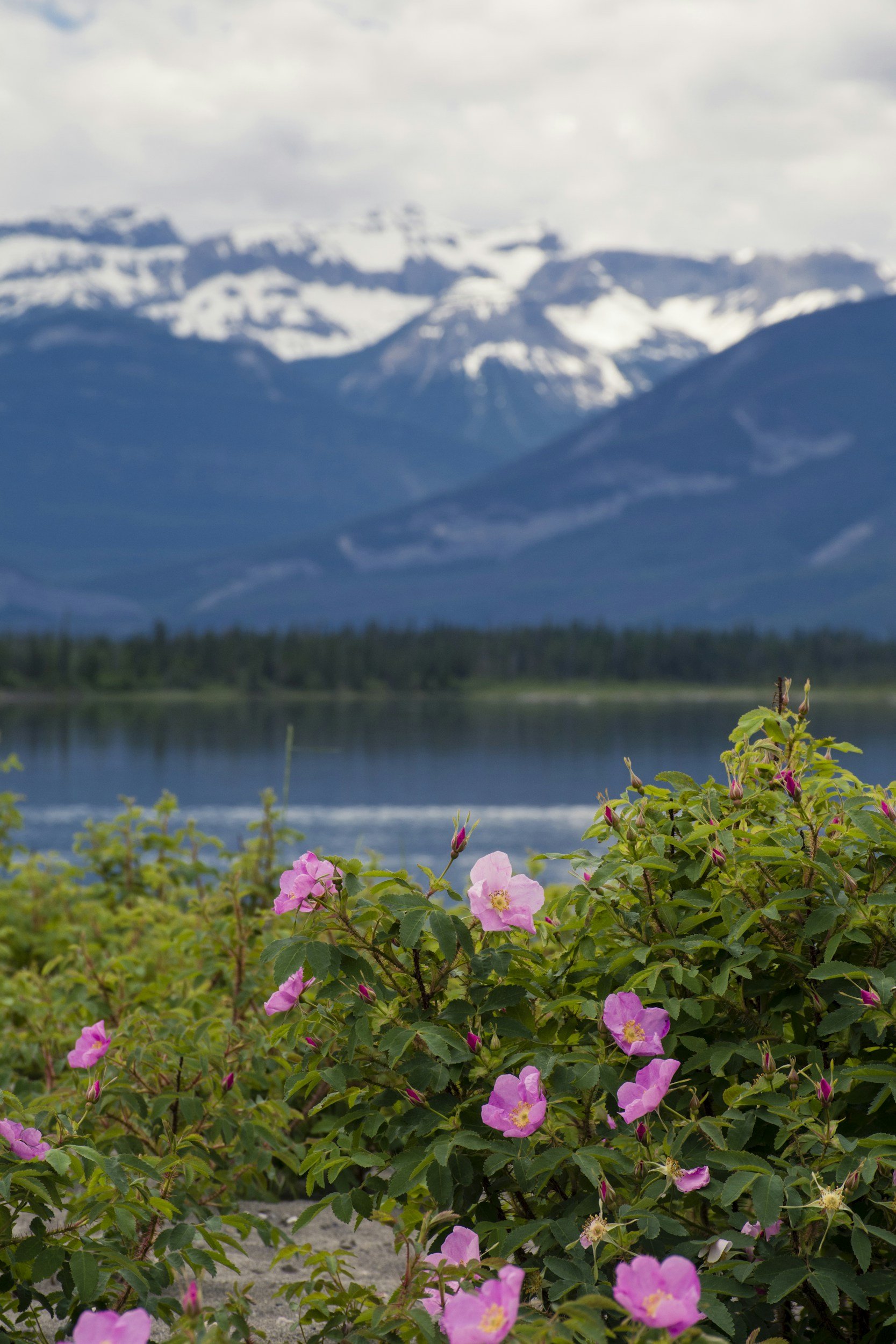
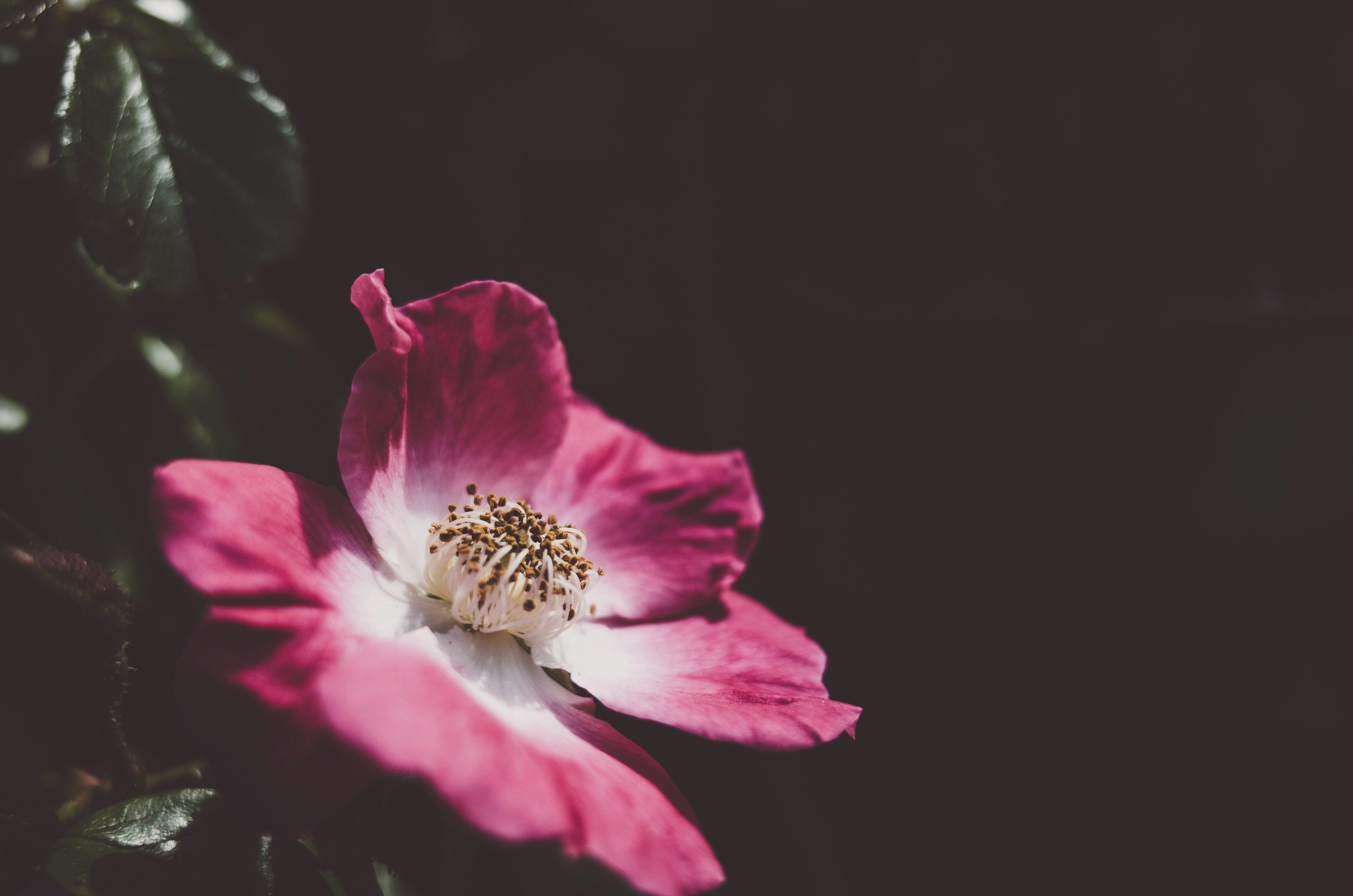
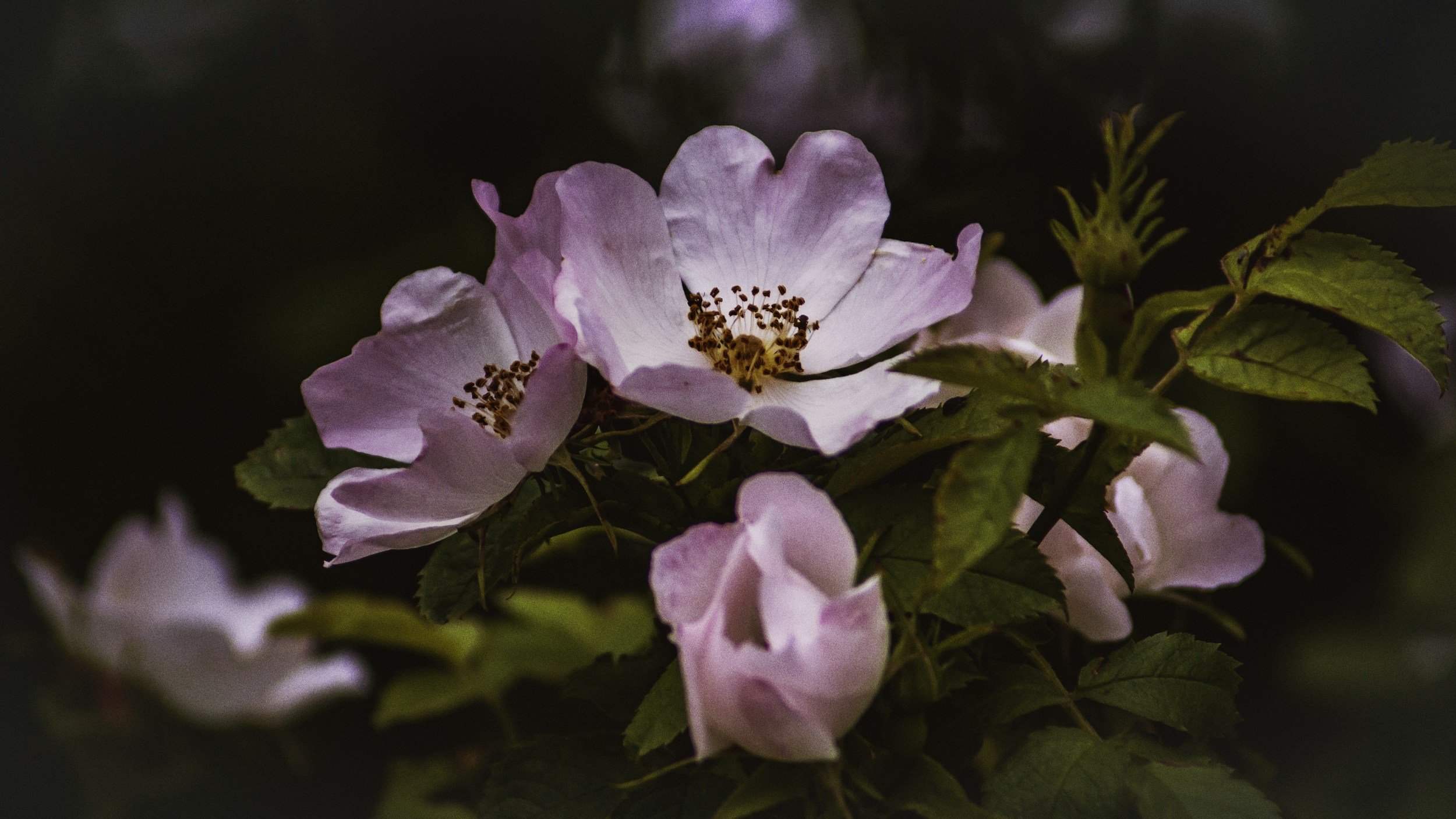
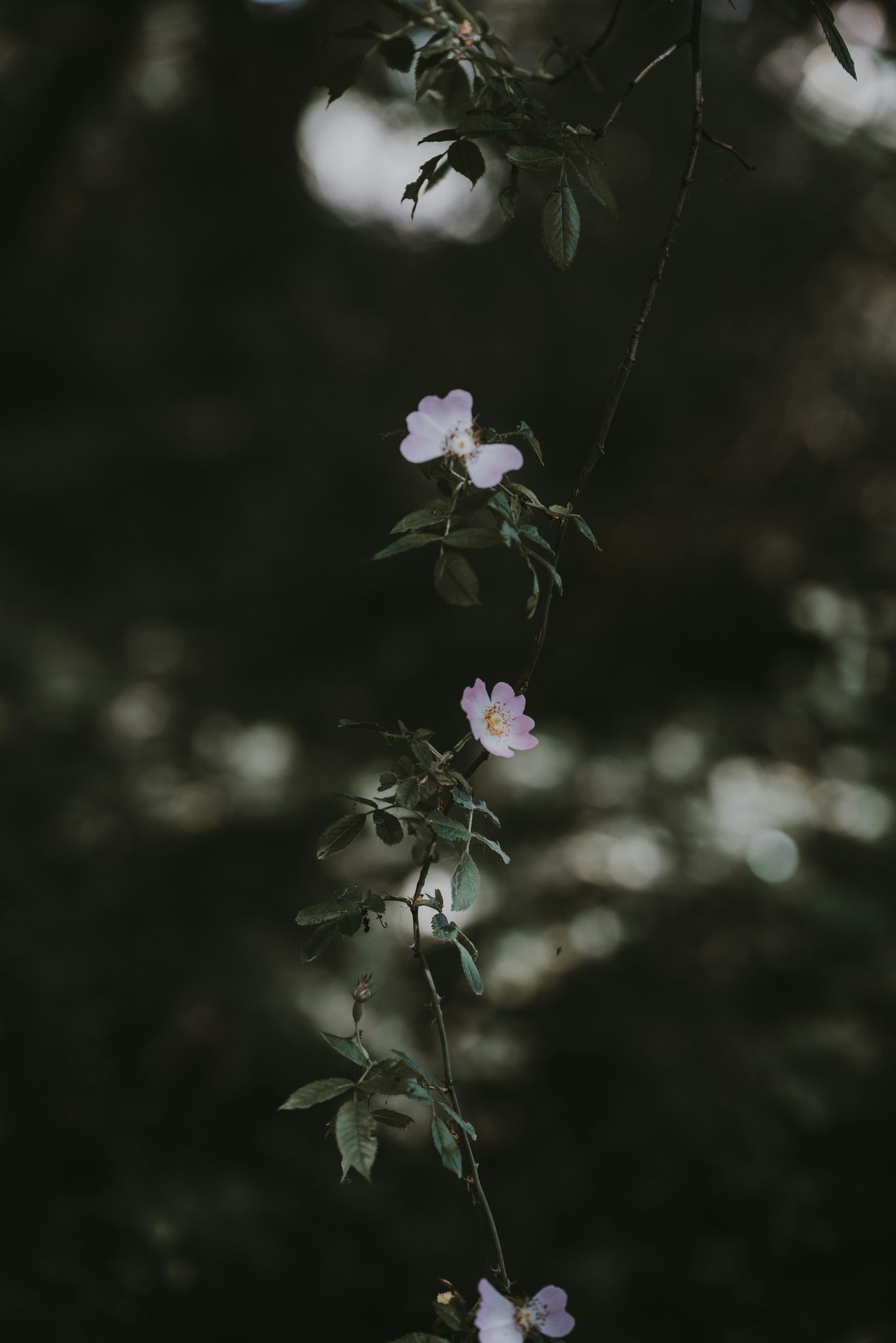
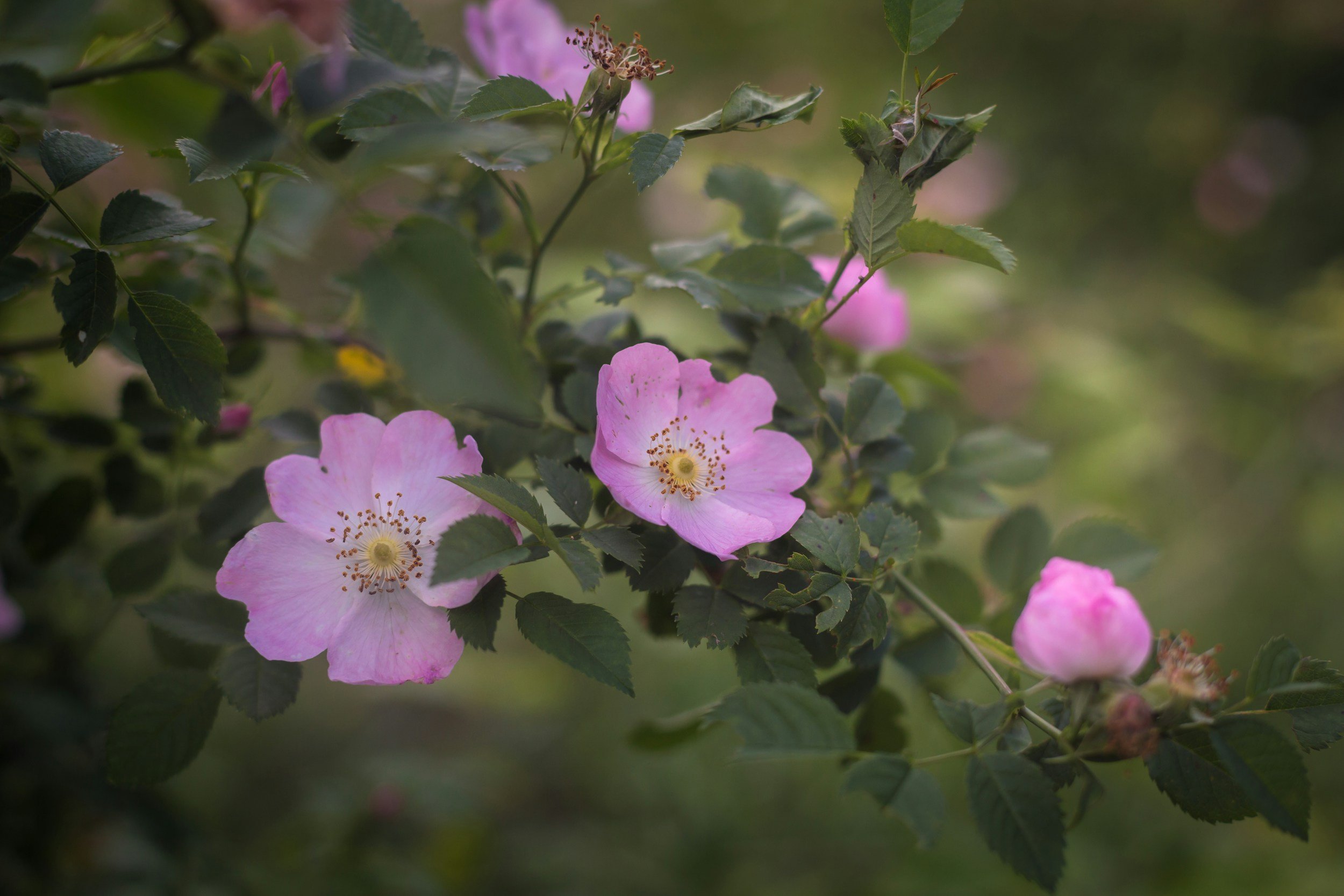
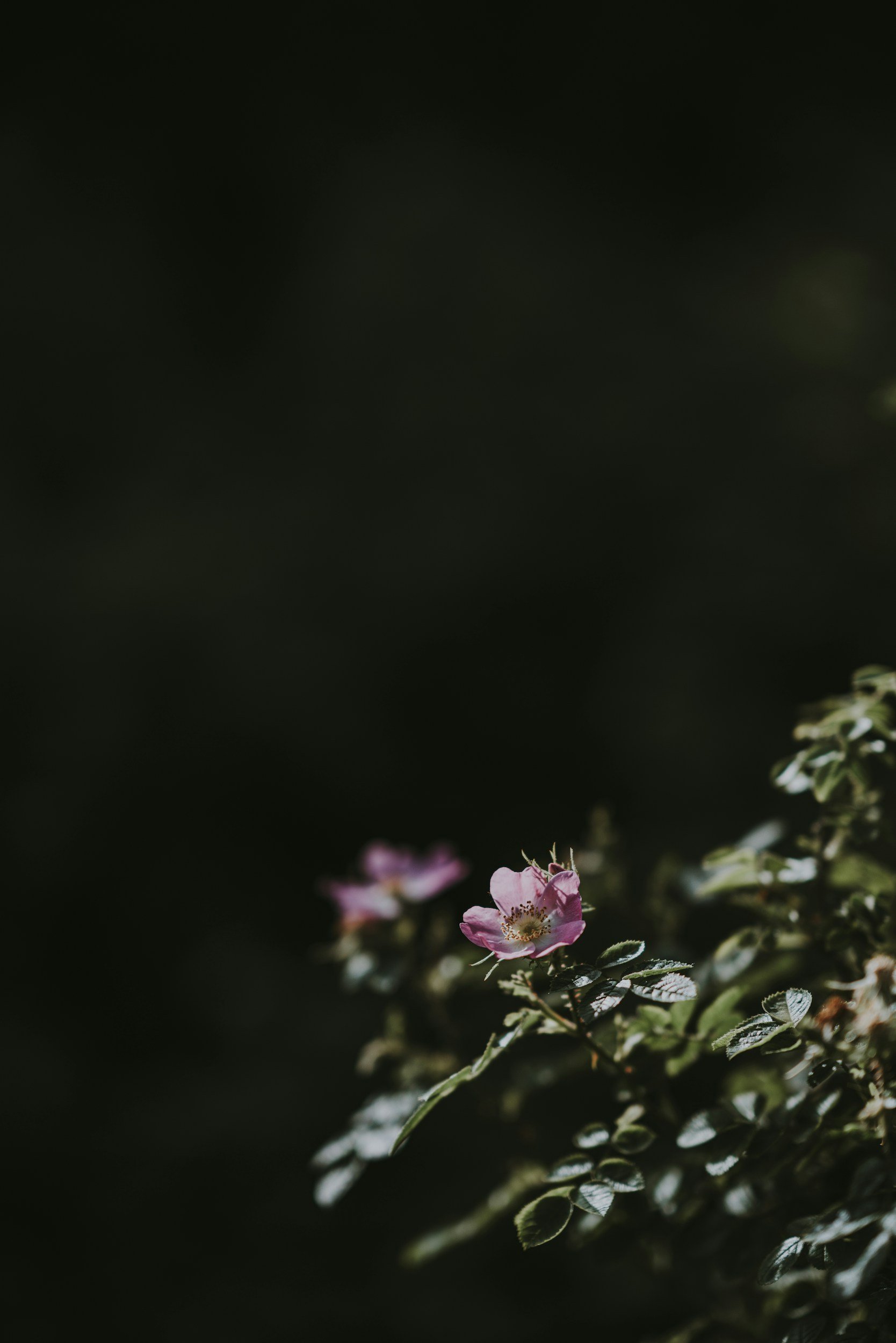
Sources
Bartram, T. (1998). Bartram’s Encyclopedia of Herbal Medicine. Constable.
Fisher, C. (2009). Materia Medica of Western Herbs, (2018 edition). Finchley Road, London. Aeon Books.
Hedley, C & Shaw, N. (2020). A herbal book of making and taking. Finchley Road, London. Aeon Books.
Hoffmann, D. (2003). Medical Herbalism: The Science and Practice of Herbal Medicine. Healing Arts Press.
McIntyre, A. (2019). The complete herbal tutor, revised and expanded edition. Finchley Road, London. Aeon Books.
Plants of the World Online | Kew Science. (n.d.). Plants of the World Online. https://powo.science.kew.org/
Disclaimer: This page is for educational purposes only. Consult a qualified medical herbalist before using herbs, especially during pregnancy, when trying to conceive, while breastfeeding, for medical conditions, or with children.
Read the full disclaimer → Medical Disclaimer.


